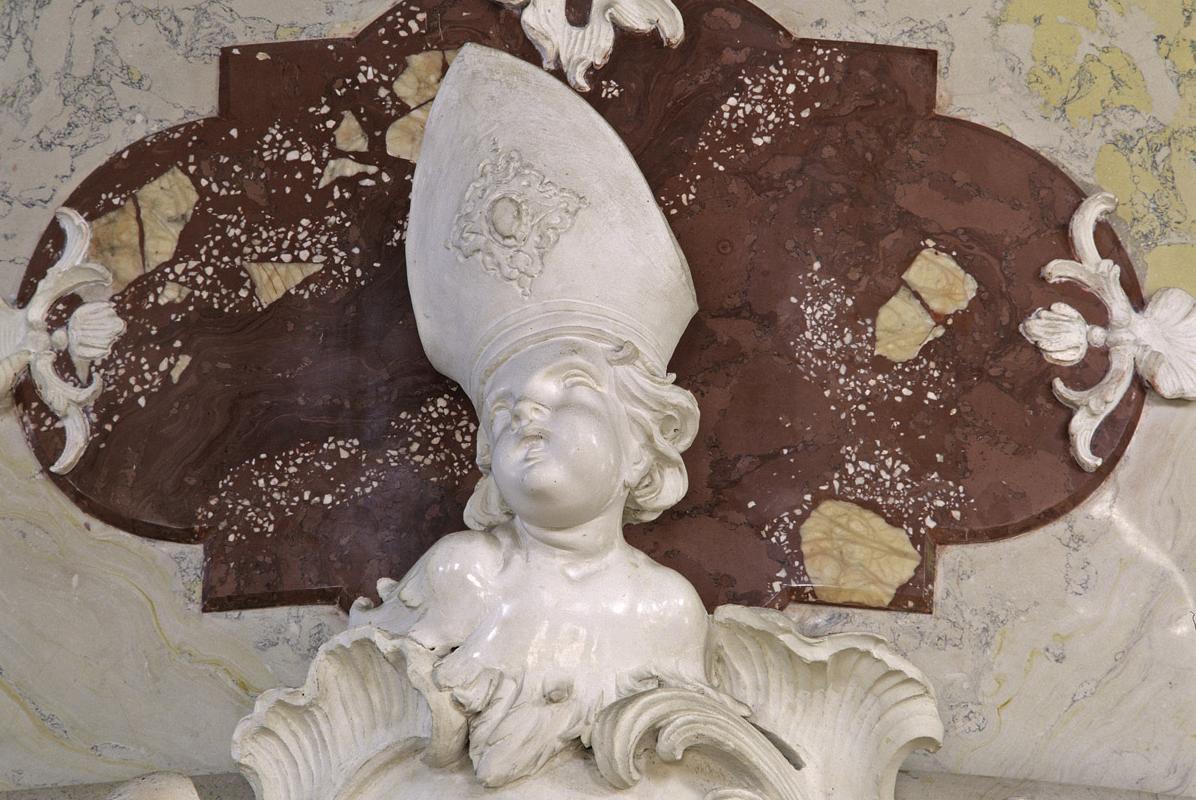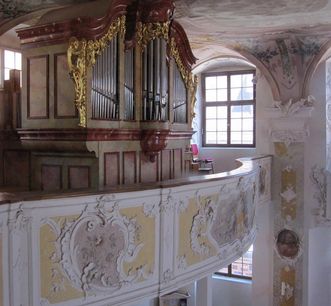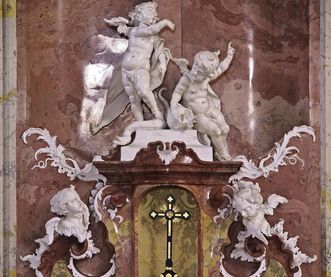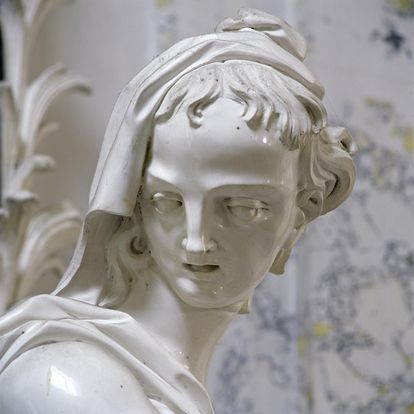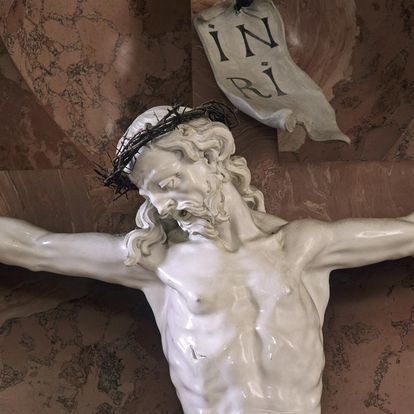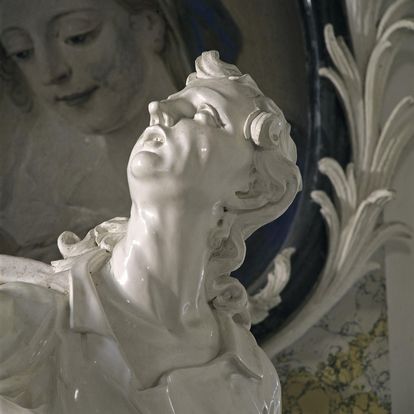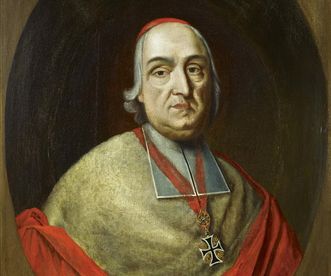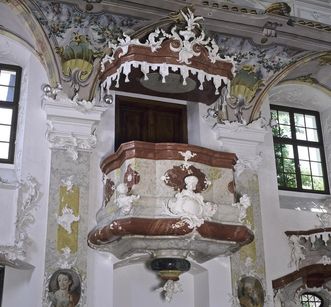Church and New Palace created together
Between 1741 and 1743, the lavishly decorated palace chapel was built in the east corner pavilion, commissioned by Prince-Bishop Damian Hugo von Schönborn. By removing the suspended ceiling, it was possible to turn the original horse stables and overhead tack room into a large hall. From outside, the church is indistinguishable, so completely was it integrated into the facade. The integration of this church marked the start of the conversion of the New Building to the New Palace.



